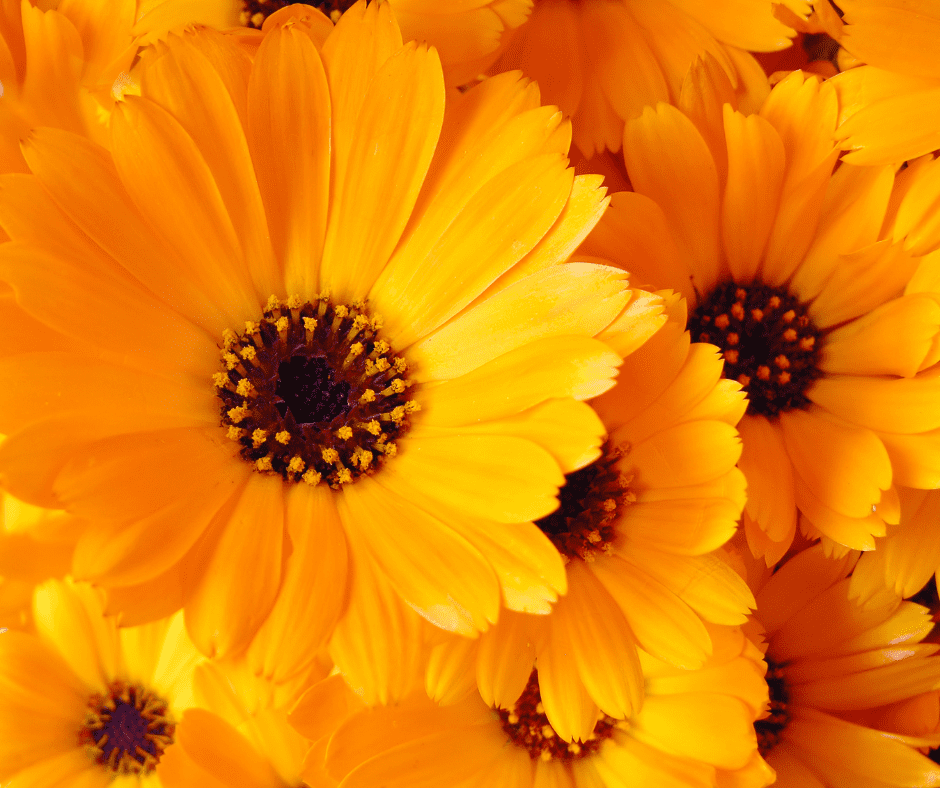If you’re looking to add a splash of vibrant color to your fall garden in San Antonio, Texas, look no further than calendula! Known for its cheerful, daisy-like blooms, calendula is not only a feast for the eyes but also a versatile and beneficial addition to your garden. Let’s see how to grow it!

Growing Requirements for Calendula
Light Exposure Requirements: Calendula thrives in full sun, making it perfect for the sunny climate of San Antonio. Aim to plant in a spot where it will receive at least 6-8 hours of direct sunlight each day. This will ensure robust growth and abundant blooming throughout the fall season.
Average Mature Height and Width: Calendula plants typically reach a mature height of 12-24 inches, with a spread of about 12 inches. Their compact size makes them ideal for garden beds, borders, and even container gardening. Despite their modest stature, their bright, golden-yellow to deep orange flowers are sure to make a big impact.
Soil Preference: Calendula isn’t particularly fussy about soil, but it does best in well-draining, moderately fertile soil. A pH range of 6.0 to 7.0 is ideal. If your garden soil is heavy or clay-like, consider amending it with compost or other organic matter to improve drainage and fertility.
Watering Needs: While calendula is relatively drought-tolerant once established, it prefers consistent moisture. Water your plants regularly, aiming to keep the soil evenly moist but not waterlogged. Plant in well-draining soil.
Fertilizer Preference: Calendula isn’t a heavy feeder, but it does benefit from occasional feeding. A balanced, all-purpose fertilizer applied once a month during the growing season will support healthy growth and prolific blooming. Alternatively, you can use a slow-release granular fertilizer at the time of planting. Look for a fertilizer with an even ratio like 10:10:10 or something comparable.

Benefits of Calendula
Edible Calendula Flowers: One of the most delightful aspects of calendula is that its flowers are edible! The petals have a mild peppery, tangy flavor, reminiscent of saffron. They can be used fresh in salads, soups, and stews, or dried and used as a seasoning. Petals also make a beautiful and tasty garnish for cakes and other desserts. Additionally, they can be steeped to make a soothing herbal tea.
Benefits for Pollinators: Calendula is a fantastic plant for attracting pollinators to your garden. Its bright, open flowers are particularly appealing to bees, butterflies, and other beneficial insects. By planting calendula, you’re providing a valuable food source for these important creatures, which in turn helps to support a healthy and balanced garden ecosystem. The fall pollinator migration is on its way, so stock up to give them a tasty treat along their journey.
With its cheerful blooms, edible petals, and benefits for pollinators, this is a must-have for any garden. By following the simple guidelines for light exposure, soil preference, watering, and fertilizing, you’ll enjoy a stunning display of color all season long.
~The Happy Gardener, Lisa Mulroy


Is calendula an annual or a perennial? When is best time to plant it? can it be grown from seed or is it best to plant seedlings?
Hi Sherry,
Calendula is a reseeding annual. late summer to early fall is a great time to plant them. You can grow from either seed or transplant. It takes about a week for seeds to germinate, and then about 6-8 weeks to be big enough to produce blooms. So it depends on when you want your flowers. If you plant transplants, you can collect some of the spent heads for seeds and scatter them around throughout winter and hopefully they will produce plants for you in early spring. Or save the seeds and plant in early spring. Calendulas like the cooler weather and as long as it doesn’t get bone-chilling cold, they can make it through the winter.